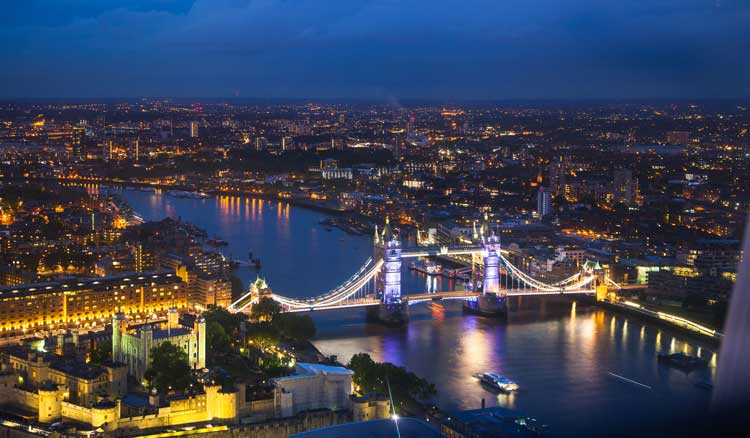
OF MICE AND NON-MAGIC FOLK
On this section of your Harry Potter sojourn, you will be leaving behind the entrance to one Leaky Cauldron in order to make your way to another Leaky Cauldron.
Confused?
Don't worry, it will all make perfect sense by the time you arrive at the end of this leg of your journey.
En route, you will encounter two mice that have been fighting over a piece of cheese for over a hundred years; you will see the spot where the Great Fire of London began on September 2nd, 1666; and you will catch a glimpse of one of the first buildings to be destroyed when the Death Eaters swooped down on London in the opening scene of Harry Potter And The Half Blood Prince.
Your journey will end outside the location that was used as the entrance to the Leaky Cauldron in Harry Potter And The Prisoner of Prisoner of Azkaban; and the exterior of the building that made a fleeting appearance as "The Third Hand Book Emporium" in the same film.
DIRECTIONS
Continue ahead to the end of Bull's Head Passage and go left along Gracechurch Street.
On arrival at the traffic lights, keep ahead over Fenchurch street towards Boots the Chemist. On the other side, go left along Fenchurch Street and then first right along Philpot Lane, crossing to its left side.
The building to your left is:-
20 FENCHURCH STREET - THE WALKIE TALKIE
20 Fenchurch Street, so called because of its location on Fenchurch Street, is better known under its nickname, "The Walkie-Talkie", a reference to its distinctive shape.
It is a 38-storey-building, that is 525 feet (160m) tall, and on top of it is the three-storey "Sky Garden". London's highest public garden, which is free to visit, although you do have to book.
If you wish to incorporate a visit to the "Sky Garden" into your Harry Potter tour, you can book it on their website via this link.
Opening hours are, Monday - Friday, 10am - 6pm. Weekends 11am - 9pm.
DIRECTIONS
Keep ahead along Fenchurch Street, and pause outside Joe and the Juice at its far end.
THE PHILPOT LANE MICE
Each of these two brown mice are each engaged in a perpetual struggle to wrest a large chunk of cheese from the jaws of the other.
The story goes that they were carved by the workmen who built this building between 1861 and 1862.
During the construction of the building, they construction workers were plagued by mice who kept helping themselves to the the workmen's lunches.
So, when the building was finished, the workers added these two mice in commemoration of their ordeal!
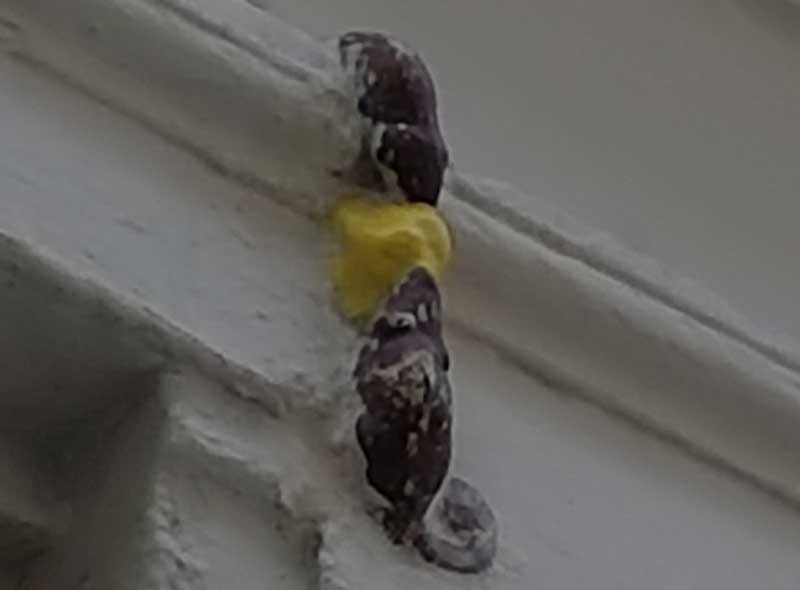
The Philpot Lane mice.
DIRECTIONS
Continue to the end of Philpot Lane and, cautiously, cross over Eastcheap via the central reservation.
Turn left on the other side, and go right along Lovatt Lane.
MEDIEVAL LONDON
Lovatt Lane follows , more or less, the same layout as it did in medieval times and is typical of the type of London streets that were destroyed in the Great Fire of September, 1666.
Notice how the cobbles slope inwards towards the central drain that would have carried the slops and human waste down into the River Thames. Ewwwwww!
DIRECTIONS
At the end of Lovat Lane, go right along Monument Street and keep ahead until you arrive at the corner of Pudding Lane.
On the wall you will see a plaque remembering the Great Fire of London, which broke out near this spot in the early hours of 2nd September, 1666.
Head towards The Monument, and pass to its left. Keep ahead over Fish Street Hill, walk to the end of Monument Street, turn left and walk onto London Bridge.
When you arrive by the white on brown sign for the Thames Path, look over the River Thames past the grey ship, which is HMS Belfast, at the spherical or egg-shaped-shaped dark building, which is:-
CITY HALL
City Hall is the headquarters of the Greater London Authority (GLA), which comprises the Mayor of London and the London Assembly.
At the beginning of Harry Potter And The Half Blood Prince, when the Death Eaters launch their attack on London, this is the building inside which the Muggles are sitting around a table as the sky darkens and the assault begins.
They move towards the windows to look across the River, as thunder rolls and the Dark Mark appears in the sky.
This, of course, is the symbol of Lord Voldemort (sorry, I didn't mean to say his name) and his Death Eaters, and is conjured up with the spell morsmordre, the incantation that is used to conjure up an enormous hologram of Voldemort's skull and serpent sign.
This is the "calling card" of the Death Eaters, which is cast over the homes of anyone they have killed, or are about to kill.
So, from A Muggle perspective, looking out of the window of City Hall, as the Dark Mark appears in the clouds, is, perhaps, not the most sensible of reactions!
As Arthur Weasley put it:-
"...You-Know-Who and his followers sent the Dark Mark into the air whenever they killed. The terror it inspired... you have no idea, you're too young. Just picture coming home and finding the Dark Mark hovering over your house, and knowing what you're about to find inside... Everyone's worst fear... the very worst."
WATCH THE SCENE
LONDON BRIDGE IS FALLING DOWN
In 1013 the Danish leader Sweyn Forkbeard (960 -1014) son of Harald Bluetooth (history got so dull when Kings and Queens took up numbering rather than nicknames!) invaded London.
He met with a determined resistance but the citizens eventually surrendered.
The English King, Aethelred, (968 - 1016), fled into exile and Sweyn was proclaimed King of England.
Sweyn's victory, however, was - for him at least - short lived, as he died five weeks later.
The following year Aethelred returned with an ally, Olaf 11 (995 - 1030) of Norway, and they set about recapturing the City.
The Danes, however, repelled the attack and the invading Norsemen were forced to retreat under a barrage of missiles coupled with streams of boiling oil and water that rained upon them from London's heavily fortified bridge.
According to the 13th century Norse Sagas, it was Olaf's ingenuity that saved the day. He had his boats covered with thick platforms of wattle and clay, and, with his men ensconced beneath this protective layer, he had them row upriver under cover of darkness and tie ropes around the timber piles of the bridge.
With the next flood tide, his warriors rowed downriver and brought London Bridge tumbling into the water along with many of the astonished Danish defenders. The rest fled, and the City was taken.
This event was later immortalised by the Norse poet Ottar Svarte who wrote: -
London Bridge is broken down
Gold is won and bright renown
Shields resounding,
War horns sounding
Hildur shouting in the din!
Arrows singing
Mailcoats ringing
Odin makes our Olaf win
In time, this saga of war evolved into the popular children's rhyme, "London Bridge Is Falling Down My Fair Lady."
THE HISTORICAL LONDON BRIDGE
The first London Bridge was built by the Romans, probably in about AD100 a little further down river from the present bridge. There was certainly a bridge here in the ninth century as the Anglo Saxon Chronicle tells us of a woman accused of witchcraft being thrown off it.
During the first thousand years the bridges here were made of wood and would frequently collapse or be destroyed in war, as happened in 1014.
The first stone bridge was built by Peter of Colechurch in 1176 and by 1201 there were references to houses on the bridge.
The houses were removed from the bridge between 1758 and 1762 and between 1823 and 1831 a new bridge, designed by Sir John Rennie, was erected a little way upstream from where the old bridge had stood.
By the 1960's increased traffic flow had caused some subsidence of the bridge and it was decided to build a new and wider one.
The present bridge was constructed around the old bridge in order not to interrupt the flow of traffic. Rennie's Bridge was sold to the McCullough Oil Corporation for £1,000,000 and transported to Lake Havasu, Arizona, USA.
Until 1760 the City Corporation - the governing body of the City of London - had charged a toll to cross the bridge, which was paid into the Bridge House Estate Fund and used to maintain and repair the bridge.
Although no monies have been paid into this fund since 1760, each successive version of the City bridges (London Bridge, Tower Bridge and Blackfriars Bridge) has been built using the resources of the fund.
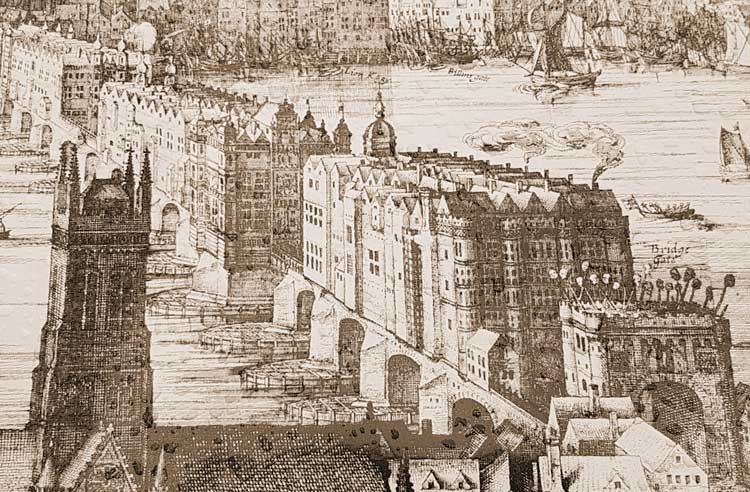
Old London Bridge.
DIRECTIONS
Make your way to the centre of London Bridge, pause and look left towards Tower Bridge.
THE FLIGHT OF THE ORDER OF THE PHOENIX
This is one of the sections of the River Thames along which the members of the Order of the Phoenix fly on their broomsticks as they escort Harry Potter to 12 Grimmauld Place, in the early scenes of Harry Potter and the Order of the Phoenix.
Having flown along the Thames through Docklands, which you can see beyond Tower Bridge, they fly past HMS Belfast, the grey battleship that you can see to the right, they continue under London Bridge, on which you are now standing, and on up the Thames.
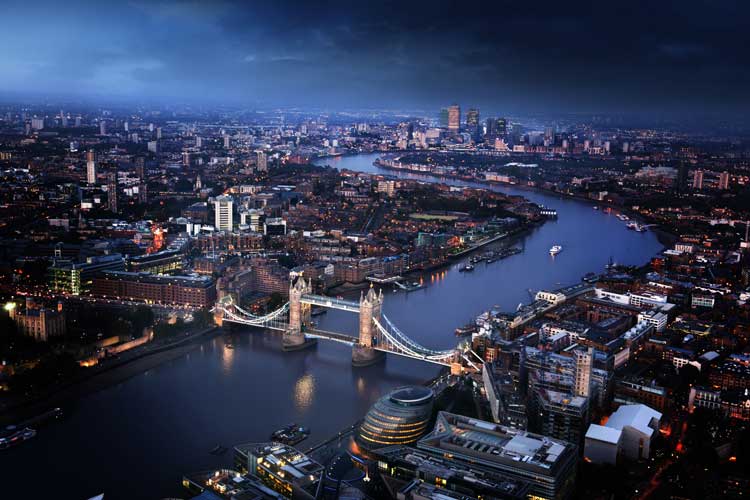
Looking along the Thames towards Docklands.
DIRECTIONS
Continue over London Bridge, and, on its other side, keep ahead to the traffic lights, and, on arrival, go right, and cross the road via the traffic light crossing towards the Barrow Boy and Banker Pub on the other side of the road.
Veer left in front of the Barrow Boy and Banker, and keep ahead towards the grey bridge.
A little way along, if you look to your right, you will see:-
SOUTHWARK CATHEDRAL
Southwark Cathedral, or, to be precise, the Cathedral and Collegiate Church of St Saviour and St Mary Overie, Southwark, is London's oldest Gothic church, although it has only been a Cathedral since the creation of the diocese of Southwark in 1905.
Although there was certainly a "monasterium" here at the time of the Domesday survey, the origins of the current foundation date back to 1106, when a new church was founded as the Augustinian Priory of St Mary Overie (Overie means "over the river"), fragments of this church still remain.
At the Reformation and Dissolution of the Monasteries (1537 - 1539) the surrounding Monastic buildings were demolished and the church became the parish church of St. Saviour at Southwark, the name by which it was known before achieving its Cathedral status in the early 20th century.
DIRECTIONS
Continue to the grey bridge and, when you arrive at the pedestrian crossing located underneath it, turn right past the black posts into Green Dragon Court, which has a decidedly Knockturn Alley ambience about it!
At the end of the tunnel, go left and, having past the Globe pub on your right, keep ahead over the road, pass beneath the silver "Borough Market" sign, veer right just after the drinking fountain, go first left, and then keep ahead towards the Chez Michele shop you can see in the distance.
On arrival opposite it, turn right along Stoney Street and pause just beneath the bridge to look over at the opposite side of Stoney Street.
THE LEAKY CAULDRON
In Harry Potter And The Prisoner Of Azkaban, this is where the Knight Bus screeches to a halt, causing the alarm of a parked car to go off.
Harry then climbs off and the bus speeds away leaving Harry to be shown into the Leaky Cauldron.
Although this is where the exterior shot was filmed, the interior was a film set at the Leavesden Studios.
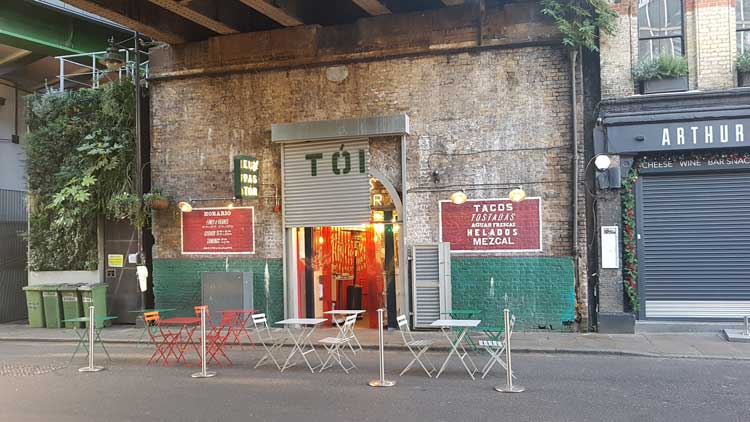
Another entrance to the Leaky Cauldron.
DIRECTIONS
TYurn right, pass under the bridge, and pause outside number 8, on the left between the bridge and the Market Porter pub. This was:-
THE THIRD HAND BOOK EMPORIUM
For Harry Potter And The Prisoner Of Azkaban, the exterior of this shop was transformed into "The Third Hand Book Emporium."
It was a used books shop, which was located next door to the Leaky Cauldron on Charing Cross Road, and which specialised in old and rare books, as well as maps and first editions.
Although it is not actually named in the Harry Potter books, it appears as "The Third Hand Book Emporium," in the movie of The Prisoner of Azkaban, albeit, the appearance is so fleeting that you might have blinked and missed it!
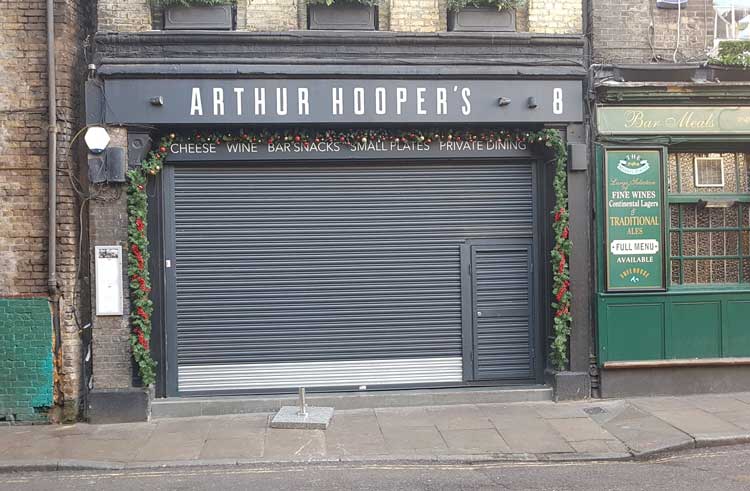
This was the Third Hand Book Emporium.